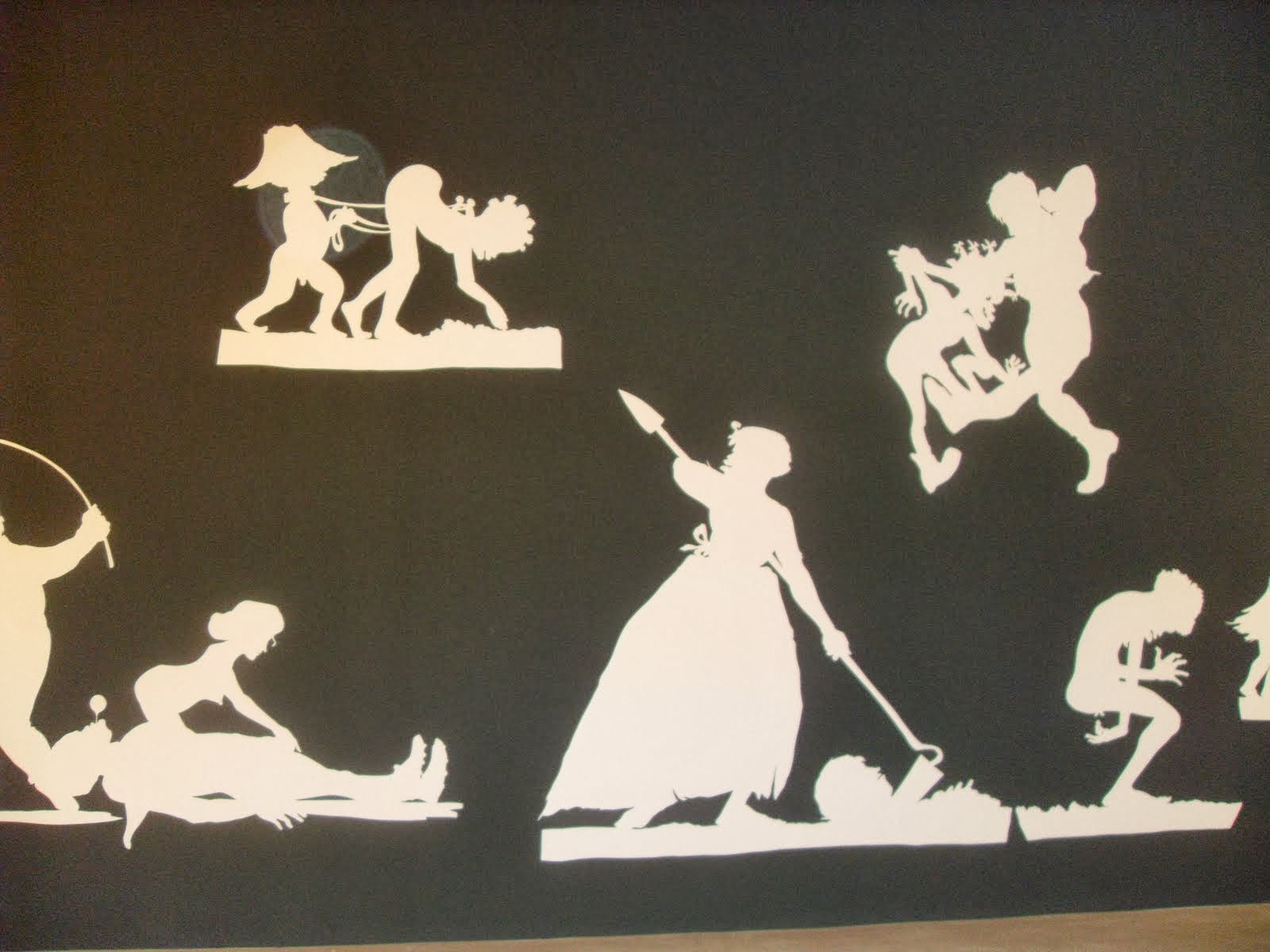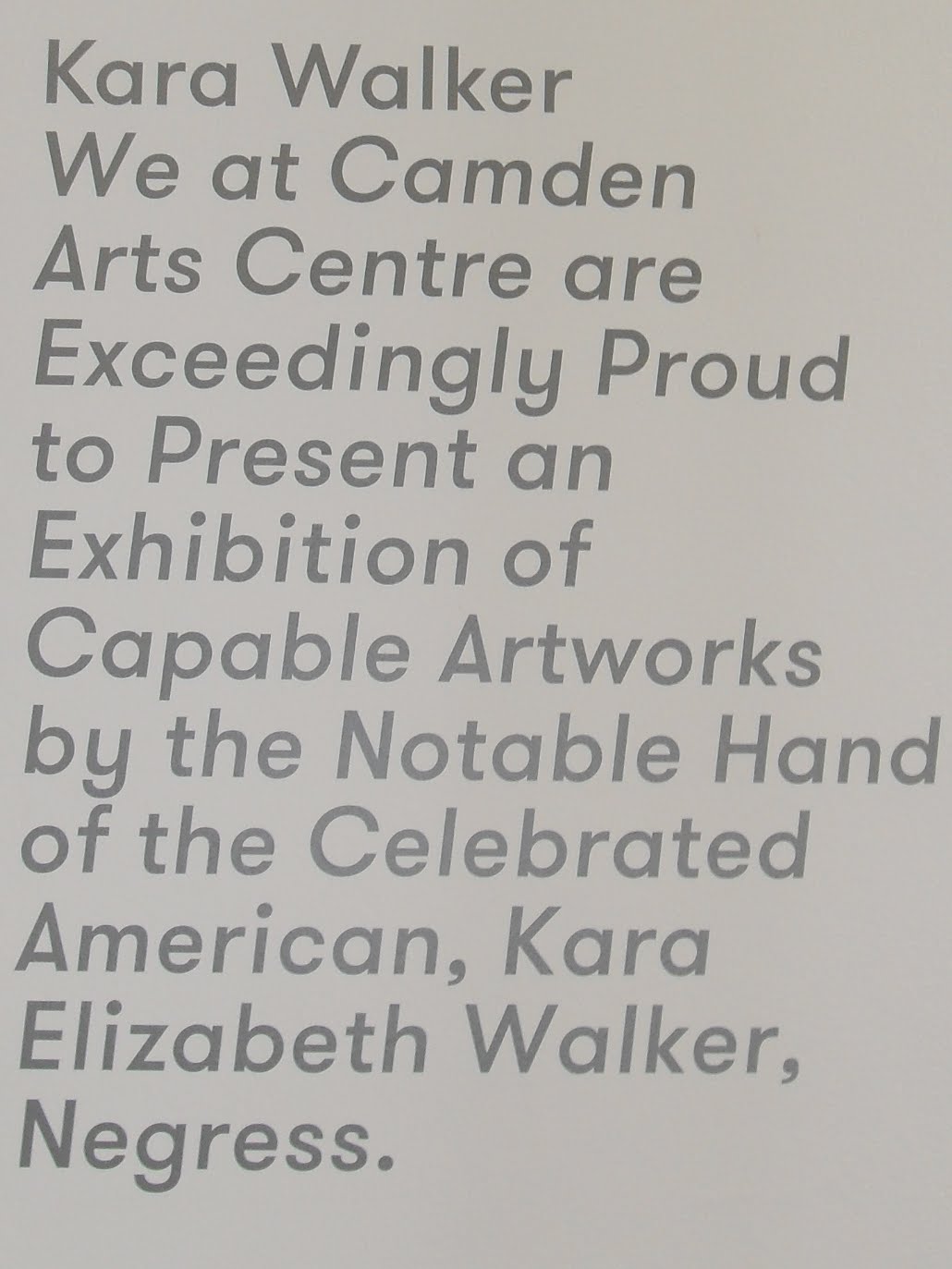I went to see the Sarah Lucas retrospective at Whitechapel Gallery, and I still don't know what to make of it. I assume the fact that her art seems to refer exclusively to sex - the anatomy of sex, the performance of sex, the depiction of sex - relates to gender politics in general as well as, presumably, a personal obsession of some kind. She herself is quite androgynous, so perhaps she views the sex war (and she does seem to see it as a war) from both (or should I say all) angles. Most of the works on display are 3D, made of materials like wood or stuffed tights, but some are photographs of her and her then boyfriend (painter Gary Hume), the former including the famous breasts-as-fried-eggs image, the latter using beer cans and the like as substitute genitalia. Very large plaster images of penises feature also (apparently one man left the exhibition muttering that he never wanted to see a penis again). Some are quite witty, like
Nice tits, some I couldn't really decode, but all made me wonder who buys this work, though I assume it is not all bought by public galleries.
I admit I went out of curiosity rather than because I thought I would enjoy the show, but I don't think I was left much the wiser as to the origin or purpose of Lucas's work. But it is certainly distinctive, still has the capacity to shock, and does force one to think about gender relations, even if not nearly as much as Lucas apparently does. Her most recent work is in cast metal, which gives it a more permanent look than the earlier work, which was largely made of found objects, and makes it seem more like "art" - I'm not sure that this is what Lucas should be aiming at, but at least it will last longer and probably be more saleable.
The show was well attended when I was there, mainly by student and lecturer types, all of whom were taking it very seriously and didn't seem to be amused by the jokes. I found the work a bit too one-note for my taste but Lucas is certainly a strikingly original artist, and originality of course counts for a great deal in contemporary art.
The visit to Whitechapel also enabled me to have a look at the golden leaves with which sculptor Rachel Whitehead has adorned the gallery's facade. I was rather disappointed to find they are so high up it is difficult to make them out from the street, but the combination of an artist who worked in this area and this local landmark is apt, as are the connotations of congratulatory laurel leaves and the preciousness of art.
 |
| Whitechapel Gallery (library now part of gallery) - golden leaves top left |











